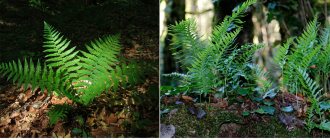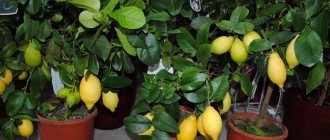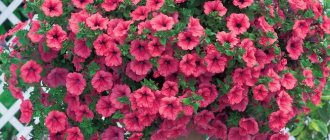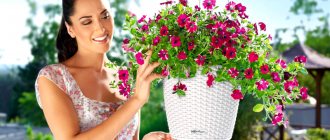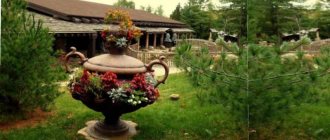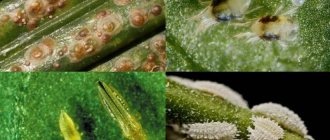Flower growers often have to search for shade-tolerant plants suitable for placing on an insufficiently lit window, decorating a corner of a room, a bedside table or shelf. Vases with large, tall specimens stand on the floor, vines send out long shoots that twine around a support or wall. For the good development of indoor flowers, it is necessary to take into account their need for light intensity. Otherwise, you may experience disappointment due to lack of flowering, weakened appearance and slow plant growth.
What is the difference between shade-loving and shade-tolerant plants?
There is no clear difference between these species, but there is a slight difference. Shade-loving flowers include flowers that are undesirable to be in direct sunlight. Their delicate flowers and leaves get burned when placed on a south-facing window, the roots and shoots suffer from high temperatures, and in the summer months these plants develop slowly and have a sickly appearance. They grow much better in diffused light - on a northern windowsill, at a distance of 1 or 2 m from the southern window. But you shouldn’t move them significantly deeper into the room - shade-loving species in remote corners will lack light.
The illumination drops significantly even 3 m from the window. For normal photosynthesis, its values should not be lower than 1000–500 lux. You can measure the intensity of light with a special device - a lux meter.
You can also determine whether the lighting in a certain place of the room is suitable for indoor flowers using a simple test: if a person with good eyesight is able to read a book here without strain and discomfort in the eyes, then the plants will be able to develop normally.
Shade-tolerant species are distinguished by their ability to grow in low light intensity, but most of them feel great in brighter places. They adapt well to environmental conditions. It is better if they end up in a shaded place immediately after the cuttings have rooted or a young bush has formed from a sprouted seed. An adult plant should be adapted to new conditions gradually, moving the flower pot to an increasing distance from the window.
Perennial joy: compositions from perennial vines
Gardeners often plant perennial climbing flowers. They grow for decades if cared for correctly. The most popular of them:
- clematis;
- wisteria;
- campsis;
- honeysuckle;
- girl's grapes;
- climbing roses
- ivy.
Clematis
Clematis is a charming vine with large flowers, powerful roots, entwining arbors, arches, and verandas. It grows all over the world, there are more than 200 species, and a dozen and a half of them are grown here. Simple and double clematis flowers of various shades:
- blue,
- red;
- lilac;
- white;
- purple;
- blue;
- cherry;
- beige.
Care consists of loosening the soil. Spring fertilizing with urea is needed (a tablespoon per bucket of water); closer to autumn, the vine requires full mineral fertilizer. Water an adult bush generously three times a week - up to two buckets of water.
Propagated by cuttings, dividing the bush, layering. The easiest way is to cut cuttings with nodes from the middle of the shoot. They do this at the beginning of summer. The cuttings are planted in the ground, covered with a jar on top in the shade until roots appear.
Replant clematis in a sunny, windless place. Liana does not like acidic, moist soil; drainage is needed. Transplantation occurs in spring or autumn. Compost and mineral fertilizers are added to the soil. The liana grows quickly. Before winter, the soil is loosened, the shoots are cut off, a knotty stump remains, it is covered with 10 cm of soil. The plant is frost-resistant, cold -35 is not terrible, and also tolerates heat well.
The flower suffers from infectious diseases and begins to fade. Wilted shoots are destroyed and the plant and soil are treated with a copper-soap emulsion. Prevention of fungal diseases is carried out by spraying the shoots with foundationazole (20 g per 10 liters).
Many pests are dangerous to clematis - spider mites, aphids, mole crickets, mice, caterpillars, snails. The roots are damaged by small worms - nematodes, and the plant dies. The method of combating nematodes is to plant calendula, parsley, marigolds, and dill nearby.
Wisteria
Wisteria is a luxurious southern perennial, native to eastern countries. Interesting with hanging half-meter tassels of blue, pink, lilac.
Kampsis
Campsis is a magnificent perennial that decorates fences, trellises, and arches. Its bright flowers - orange, yellow, red - are pleasing to the eye.
Honeysuckle
Honeysuckle, a liana-like plant with inedible fruits, looks great in garden plots due to its decorative features - abundant flowering, dense foliage, and wonderful aroma.
Maiden grapes
Maiden grapes decorate walls, fences, verandas. Easily propagated by cuttings and layering. Gardeners adore it, it is unpretentious, grows quickly, covering large areas.
climbing roses
Climbing roses clearly claim a royal role among climbing garden favorites. Their beauty, the aroma emanating from the arches and arbors entwined with them enchant. The variety of shapes and colors allows you to create wonderful compositions.
Ivy evergreen
Ivy is evergreen and grows over the surface wherever it is planted. Care consists of watering, keeping the soil moist. It forms luxurious thickets and can easily completely entwine a building.
Flowering shade-loving plants
There are not very many flowering species among shade-loving plants. As a rule, they need fairly intense, but diffused light. The best placement for such species is the window sills on the east or west side, a short distance (up to 1 m) from the south window.
Rare flowers, such as Saintpaulia, can actively bloom on windows facing north. This is due to the fact that the appearance and opening of buds requires more light than the growth of shoots of plants with decorative leaves.
Azalea
The peak flowering of the plant occurs in the cold season. Many gardeners face certain difficulties when caring for this indoor flower - the need to ensure the room temperature is 12–14°C and maintain high air humidity. The azalea can be placed on a western or northern windowsill; during the period of planting and formation of buds (in October-November), the bush requires more intense lighting than during flowering.
Fuchsia
This shade-loving plant is suitable for diffused light or partial shade. During the dormant period (from November to mid-January), when kept in a room with an air temperature between 5–10°C, fuchsia can be kept in a dark place, such as a garage. In a warm room, the bush needs brighter lighting, otherwise the shoots begin to stretch, grow thin and weak, which will subsequently negatively affect the flowering of the plant.
The situation can be corrected by organizing additional illumination of the flower with an LED or fluorescent lamp.
Poinsettia
This shade-loving plant is also called the Christmas star for its blooms during the winter months and the brightness of the inflorescences and surrounding leaves. Poinsettias love bright but soft light and placement out of direct sunlight. To set flower buds, the plant needs to regulate the light throughout the day. In the evening, the pot with the bush is covered with a thick opaque bag or placed in a closet or other dark place for 12…14 hours. This will ensure that the poinsettia produces bright, evenly colored bracts.
From the moment it begins to bloom, the Christmas star requires intense lighting. If necessary, you can supplement it with artificial lighting. Lack of light during this period sometimes leads to leaf fall.
Phalaenopsis and Miltonia orchids
These plants should be positioned, shading them from direct rays of the sun, which can cause burns on the leaves and flowers. The temperature in the room is maintained at 20–22°C throughout the year. In winter, it is allowed to reduce it to 15°C.
Vriesia
Vriesia also needs intense but diffused light. In the warm season it is placed on the east or west window, in winter - on the south. When direct sunlight hits the flower, the color of the leaves deteriorates. The plant is not only shade-tolerant, but also warm and moisture-loving.
For normal development of the bush, the temperature in the room should not be higher than 30°C, in winter - not lower than 18°C.
Honeysuckle
Among the climbing honeysuckles, Telman's honeysuckle (Lonicera tellmanniana) lived for some time near the western wall, where there was more than a meter of snow in winter, but it did not grow more than three two-meter shoots and looked somehow pitiful. It bloomed a little, with bright yellow-orange flowers without a smell, and accordingly, there were fruits, bright red balls in a green wrapper - the cat cried.
Apparently, all efforts were devoted to survival. In the winter I removed it from its support, wrapped it up, and in the summer I mulched it thickly. Did not help.
Tellmann's honeysuckle (Lonicera tellmanniana). © gartenhit24
Unpretentious shade-loving flowers for apartments and houses
There are many unpretentious plants that thrive in partial shade. These, for example, include high aspidistra, soleirolia, crescent polygonum, ophiopogon, large-leaved podocarp.
Aspidistra tall
A shade-loving plant, very unpretentious, capable of growing even in significant shade. For good development, high aspidistra requires regular watering, fertilizing, and a temperature of 10 to 25 ° C. Transplants are carried out every few years using the transshipment method. Flowers on the plant appear rarely, on small peduncles located on the surface of the soil.
Saltirolia (helxina)
It is a low ground cover plant with many thin, densely leafy shoots. In a wide pot it forms a spherical bush; it looks impressive in the lower tier when planted with large plants; its compact size allows it to be used when creating a bottle garden. Suitable for growing in a north window or in partial shade.
Fern crescent (fern cirtomium)
The popular name of the plant is holly or fishtail. This is a shade-loving plant for northern windows or corners of a room with diffused lighting. In bright light, shoot growth stops. Cytomium requires regular watering and spraying of leaves.
Ophiopogon
This plant is also called Japanese lily of the valley. Ophiopogon is a shade-tolerant plant, develops well in both intense and soft light, can withstand both hot and cool weather, and prefers frequent moistening of the soil and air.
Podocarp macrophylla
The plant is also called footcarp. In natural conditions, these are large shrubs with decorative leaves and a dense crown. Podocarp macrophylla is often used for growing bonsai. It can be located next to a south window or on an east or west window sill.
In winter, it feels better in a cool room away from heating devices.
Common hop
A plant that also has a wonderful aroma and can grow anywhere: in the eternal shade, and on the poorest soil. But excess light can harm it - cause wilting, provoke various diseases.
Leaves and cones can be added to tea and other drinks, and they are also used in folk medicine.
It covers the surface with a thick carpet, so it is suitable for creating green fences that reliably hide the area from prying eyes. Stem length - up to 7 m.
If the soil on which it is planted is fertile and rich in nutrients, then if the gardener is careless, hops can take over the entire garden, reach the flower beds and beds, displacing all other plants.
Shade-loving plants with decorative leaves
Among the shade-loving indoor flowers, the most decorative are those with beautiful leaves of graceful shape and attractive colors. These include calathea, aucuba, fittonia, variegated codiaum, adiantum and many others. When growing ornamental species (except calathea), it should be taken into account that the more variegated and brightly colored the foliage, the more lighting is required to preserve it. With excessive shading, the shoots acquire a uniform green color to maintain photosynthesis at the required level.
Calathea
This shade-loving plant does not tolerate bright light and is ideal for placement in the corners of rooms. Under the influence of direct rays of the sun, calathea leaves lose their bright color and curl. The plant requires high air humidity and moderate watering.
Varieties with pubescent leaves cannot be sprayed; to clean them from dust, they are periodically given a warm shower, the pot is placed on a tray with damp moss or next to a container filled with water.
Aucuba
For species with green leaves without spots, shaded areas are suitable; varieties with variegated colors require more intense lighting. In the warm season of the year, it is advisable to maintain the air temperature at 18–20°C; in winter, 10–14°C is sufficient.
At higher rates, the risk of leaf fall increases. To prevent their dropping, the bush is illuminated with a phytolamp.
Fittonia
In terms of the colorfulness of its leaves, Fittonia can compete with the flowers of many plants.
A plant with decorative light and dark green or red leaves with distinct white, pink or red veins. For normal development of Fittonia, intensive but diffuse lighting, temperature within 20–25 ° C, regular but moderate watering, high air humidity, periodic pinching and pruning of shoots are required.
Codiaum variegated or croton
This plant has brightly colored leaves with green, light green, yellow, orange and red hues. For good development, codiaum, which reaches a height of 3 m, requires good lighting without direct sunlight.
The lack of natural light can be compensated by illumination with warm-spectrum LED lamps. Codiaum is afraid of drafts and temperature drops to 16°C and below. Regular moderate watering with warm water and daily spraying of the leaves are also necessary.
Maidenhair
This ornamental shade-loving fern produces graceful shoots with delicate, heavily lobed leaves. For good development, the adiantum should be in partial shade; too bright light leads to drying of the leaves. The plant is planted in a tight pot, watered abundantly, placing the pot in a container with settled water, then allowing excess moisture to drain.
The room in which the adiantum grows should be frequently ventilated, providing the flower with an influx of fresh air. The room temperature should not exceed 22°C; in winter, 15°C is sufficient. In the warm season, the flower is sprayed with a spray bottle. The plant does not like changing the position of the pot or moving it from place to place.
Climbing frost-resistant roses
Rose "New Dawn"
The first one I got was “New Dawn” . And it fully confirmed all the declared characteristics, especially the thorniness of the shoots. Removing its shoots from the support, covering it for the winter, and then opening it and hanging it again is a form of hard labor.
Since it readily blooms on the shoots of the current year, which can grow up to 1.5 m in a season, after two years of torment I switched to short pre-winter pruning of the bush. She seems to have only gotten better: in the spring she begins to grow briskly from all the upper buds and in July blooms with semi-double pink flowers with a delicate scent.
It blooms and grows shoots until noticeable frosts. Never required treatment. If it weren't for its prickliness, it wouldn't have a price.
Rose "New Dawn". © davidaustinroses
Rose "Flamentanz"
“Flammentanz” also turned out to be able to survive the winter if the shoots were well covered. Since it blooms once and profusely on last year’s shoots, I had to learn how to preserve them. The biggest problem is not to break it when covering.
Dry wintering in the Khabarovsk Territory is not a problem: just as everything was frozen in early November, it will thaw only by April. Moreover, it does not melt wet, since the ground is frozen, but from above, under the sun, and is blown away by the wind.
The rose drives out lashes up to 2.5 m, blooms very profusely with double red-raspberry roses in July. The foliage is dark green glossy, there are noticeably fewer thorns than that of “New Dawn”, it also never required treatment, although sometimes gnawed leaves were found.
Rose "Flammentanz" © Nikolina Tatyana
Rose "Naema"
And what really surprised and pleased me was the rose “Nahema” . In the first year after spring planting, having seen it bloom and inhaled the aroma, I already agreed to build a personal greenhouse over it. It wasn't necessary. She is quite happy with the air-dry shelter and a half-meter layer of snow on top.
An amazing rose: it begins to bloom in June on overwintered shoots, producing graceful pink buds with a strong, delicate aroma in clusters.
When fully bloomed, the center shows, and the smell becomes stronger. It blooms all summer in waves on all growing shoots. The thorniness is even less than that of Flammentanz. In a ventilated, sunny place (and I provided her with the best!) it does not require any treatment. The only difficulty is with shelter - thick shoots are difficult to bend down. And you also need to secure them so that a thick layer of snow does not break them. However, this rose is not worth that much effort.
Which shade-tolerant plants are suitable for the bedroom?
If the bedroom windows face the east or west side of the house, you can place pots of gardenia, Usambara violet, begonia, clivia or azalea on them. It is better to place light-loving species on a southern windowsill or use them for shade-tolerant plants in winter, when the brightness of the sun's rays is significantly reduced. A Chinese rose and hanging species, such as ivy or hoya, will look good on a stand next to the window opening.
Gardenia jasminoides
Gardenia is demanding of care. In order for the bush to look great and form many buds, the flower must be protected from direct sunlight and the room temperature must be maintained within 18–24°C. Gardenia also requires high humidity and frequent watering.
At the end of flowering, the bush is pruned, young shoots are pinched to form a lush crown and lay more buds, from which buds will subsequently develop.
Begonia
For good development of begonia, intense diffused light and a temperature of about 18°C are needed. The flower loves high air humidity, but when sprayed, brown spots appear on the leaves, so for this purpose it is better to use a special humidifier or place the pot on a tray with expanded clay and a low level of water.
Clivia
This is a spectacular plant with long evergreen leaves and bell-shaped flowers collected in umbrella inflorescences. Clivia grows well in partial shade and air temperatures from 20 to 25°C. During the dormant period, which promotes the formation of flower buds, it is recommended to keep the flower at 12–14°C. Water clivia moderately, more often during flowering and only with warm water.
Chinese rose (hibiscus)
A beautiful flowering plant that blooms buds in spring and summer. Prefers diffused light, but can also be in partial shade. Regular moistening of the soil and leaves is necessary. Both organic and complex mineral fertilizers are suitable for feeding the bush; the recommended frequency is once every 2 weeks.
Hoya
This vine is also often called wax ivy for the dense, glossy surface of its leaves. From late May to mid-October, the bush produces buds collected in umbrella inflorescences. The flowers are white, brown or light green with a pleasant aroma. Hoya needs shade from direct sunlight and should not be kept near heating devices.
The recommended air temperature is within 20...30°C, in winter it can be reduced to 15°C. In summer, the duration of daylight should be at least 12 hours, in winter - 10 hours. You can compensate for the lack of natural light with LED lighting.
Maiden grapes
The vine is popular among gardeners because it grows very quickly and in a short time covers all surfaces with dark green foliage with a glossy sheen. It is especially beautiful in autumn, when its leaves turn bright red.
There are many types, the most popular of which are Henry (or Chinese) and ivy (or Japanese) grapes.
Requires little care, prefers loamy or sandy soil. Depending on the variety, the vine can grow up to 3 m or reach 20 m.
Shade-loving indoor plants for the hallway
As a rule, a minimal amount of natural light enters the hallway. This should be taken into account when choosing plants to decorate it. Philodendron, pteris, sansevieria, howea, and alocasia can grow in corridors and hallways.
Philodendron
Recommended by topic
TOP 25 Most unpretentious indoor plants 23 Houseplants that purify indoor air How to revive a home flower: drying out, frozen, flooded at home
The following types of philodendron are the most shade-loving: ivy-leaved, climbing and blushing. Other varieties prefer more intense, albeit diffused light. Shade-loving philodendron species are able to grow and develop even in the almost complete absence of natural light and its replacement with artificial lighting. They are suitable for decorating hallways, corridors and bathrooms.
For the normal development of these plants, a stable temperature within 20–25°C is also required, without sudden changes. In winter it can be reduced to 16°C. Drafts should be avoided, soil moisture should be maintained at moderate levels, and the plant should be placed on a wide tray with pebbles and a small amount of water to humidify the air.
Pteris cretanus and xiphoid
Pteris are valued for the beauty of their graceful leaves. As shade-loving plants, they need shade from direct sunlight. The recommended room temperature is 20...22°C; it is advisable to protect the bush from drafts and not allow the temperature to drop to 16°C or lower. The soil in the pot should always be slightly moist; regular spraying is required to increase air humidity. In partial shade, green shades of color may begin to predominate in species with variegated leaves.
Sansevieria
Sansevieria develops well in partial shade or in fairly bright, diffused light. In such conditions, variegated varieties retain their color and the leaves do not get burned by the sun's rays. As a succulent, the plant is able to accumulate a supply of moisture in its rhizomes, so watering is done after the soil dries.
Avoid getting water into the sockets; do not spray the leaves; clean them of dust with a damp cotton cloth. The plant feels comfortable at a temperature of 20–28°C; it is advisable to reduce it by several degrees at night.
Howea (govea)
This slow-growing palm is suitable for spacious hallways and corridors with fairly intense diffused light. It is advisable to maintain the temperature within 23...27°C; higher values are possible provided that the crown is sprayed more frequently. In summer, the plant feels great in partial shade in the fresh air. Howea can withstand short frosts down to -5°C with additional insulation of the pot with the root system.
Alocasia
Due to the large size of its very impressive leaves, this plant is also called elephant ear. Their characteristic feature is the presence of stomata that release droplets of moisture when the soil and air become waterlogged. Alocasia needs intense diffused light; in winter it can be supplemented with LED lamps. The plant prefers a stable temperature of about 20°C; in winter it should not be allowed to fall below 18°C.
Watering in hot weather should be frequent, always keeping the soil moist, but without stagnating water in the pot or tray.
When the air temperature drops, you need to moisten the soil less often and more carefully so as not to cause rotting of the roots.
Varieties of vines for the garden
Lianas grow mainly in tropical forests, where, moving from tree to tree, they form impenetrable thickets. In temperate regions they are not often found in the wild, but in the landscape of private and botanical gardens and parks. All rock gardens grown in gardens can be divided into two groups: perennial plants with woody stems that overwinter without shelter, and herbaceous plants with thin stems that mostly die off in the winter.
Woody vines can be evergreens, which do not shed their leaves during the cold season, or deciduous plants. Evergreen trees rarely tolerate freezing temperatures well, so their list is much shorter than that of deciduous trees. Some vines are prized for their decorative leaves that turn beautiful colors in the fall, while others are prized for their flowering splendor. Some plants produce edible berries (grapes) and are therefore grown for their fruit.
Annual climbers are a special group. They propagate by seeds and are used for landscaping private areas along with their perennial counterparts.
Shade-tolerant plants for the living room
Plants not only decorate the living room, but also create a special coziness in it. Low bushes can be placed on window sills; larger specimens will look good on a stand by the window. In the living room, plants with high decorative qualities are grown, such as aglaonema, monstera, peperomia, calamondin, and aeschynanthus.
Aglaonema
There are many types of plants with green and variegated leaves. Aglaonema should be protected from drafts and temperature changes. The flower develops well at 20...25°C, the permissible minimum value is 16°C. Species with green leaves, such as Aglaonema modesta, can be placed in partial shade without fear of color change. Variegated varieties need brighter lighting without direct sunlight.
Monstera
The plant got its name for the rapid growth of large leaves with deep cutouts, giving them the appearance of fairy-tale monsters. Monstera develops well on a stand next to the window, content with diffused light. It is recommended to maintain the room temperature at 20...25°C; in winter it is advisable to reduce it to 18°C.
Monstera should be watered moderately, without overmoistening the substrate. The flower prefers high air humidity; it is possible to spray the bush with settled warm water or wipe the leaves with a damp sponge. The plant has a rather thin flexible stem and needs a strong support.
Peperomia
This spectacular ornamental plant is best placed on an east or west window. Peperomia feels comfortable at a temperature of 18…22°C. The frequency of watering depends on the air temperature: the higher it is, the more abundantly the soil should be moistened. On hot days, it is recommended to spray the leaves with settled water.
Calamondin (citrofortunella)
This compact tree, if well cared for, bears white star flowers and small bright orange fruits all year round. In summer, the plant is placed on an eastern or western window; in winter, it is necessary to provide 12 hours of daylight, if necessary, supplemented with a phytolamp.
The optimal room temperature in the warm season is 24...28°C, in winter - 15...18°C. For active fruiting, calamandin requires high air humidity (70%). The leaves are sprayed daily, and a container of water is additionally placed next to the bush. In warm weather, the soil should always be slightly moist; excess water should be removed after it enters the pan.
Eschynanthus
Recommended by topic
Spiraea Lilies Bougainvillea
A plant with glossy leathery leaves and tubular orange or red flowers collected in racemes. Grows well on windows on the east and west sides of the house. In summer, the optimal growing temperature is 20...25°C, in winter - 15...18°C. Frequent ventilation of the room is necessary.
Watering should be moderate, with slightly acidified water, after the top of the soil has dried, but the soil should not be allowed to dry out completely. In summer, the bush is sprayed, trying not to get it on the flowers; in winter, the pot is placed on a tray with pebbles and a small amount of water.
Ivy
The most famous of all types of vines. Ivy is distinguished by its rare inflexibility: it is capable of growing on vertical supports and spreading along the ground like a ground cover. Easily tolerates the thickest shade and winters under snow cover. In winter, fruits remain on the ivy under the snow, which birds feed on.
It decorates the garden all year round because it is an evergreen vine. It usually blooms at the end of September. The length of the vine is up to 9 m, the soil is preferably limestone or sandy.
0
0
Shade-loving large trees and palms
Among the shade-loving species there are many tree-like plants, quite tall and with a lush crown. Palm trees decorated with graceful rosettes of leaves stand out among them.
Alpinia
Prized for its large, brightly colored leaves and red, white or yellow flowers. Alpinia should be shaded from direct rays of the sun; in winter, increase the length of daylight hours by turning on an LED lamp. In the warm season, the optimal room temperature is 23...25°C, in winter – not lower than 15°C. The leaves of the plant are regularly sprayed with a spray bottle. In hot weather, water more often, keeping the soil slightly moist, in winter - less often, after the surface of the substrate has dried to a depth of 2 or 3 cm.
Dracaena
An unpretentious ornamental plant that requires shading in summer and additional lighting in winter. If exposed to direct sunlight, the leaves may get burned. The temperature in the room should not fall below 16°C. During the warm season, it responds well to room ventilation. Watering should not be frequent, moderate, and the soil should not be over-moistened.
To remove dust, the leaves are given a warm shower or wiped with a damp cloth. Periodic pruning of shoots allows you to form a more luxuriant crown.
Hamedorea
This plant is also called bamboo palm. Hamedorea tolerates partial shade well. In the summer-spring period, the most comfortable temperature values are within 18...22°C; in winter it is recommended to keep the plant at 12...15°C. In hot weather, frequent spraying and ventilation of the room are necessary. Watering should be done regularly, after the soil has dried out a little.
Washingtonia
Palm tree with large fan-shaped, very beautiful leaves. Their length can reach 2 m, making Washingtonia one of the most voluminous types of indoor plants. The flower needs intense but diffused lighting. For uniform development of the crown, it is recommended to periodically rotate the flowerpot with a palm tree along its axis.
Washingtonia prefers low air temperatures - 18...21°C in summer and 5...12°C in winter. To maintain the attractive appearance of the foliage, regular ventilation of the room is necessary. The soil in the pot should be constantly moistened, but not allowing water to stagnate.
Pachira
A plant with a thickened lower part of the trunk and bright green glossy leaves. Under natural conditions, the pachira or saba nut grows in Mexico. It is recommended to maintain the air temperature in summer no higher than 25°C, in winter – no lower than 16°C. The plant should be protected from overheating and drafts, and should not be placed near heating devices.
When spraying leaves, it is not advisable to moisten the upper buds so as not to cause them to rot. Watering should be regular and moderate, less frequent in winter when the air temperature drops.
Decorative vines that do not tolerate our winters
Now about the sad stuff. The following roses survived one or two winters with light shelter: climbing “Laguna”, Canadian semi-climbing “ Prairie Joy” and “ William Baffin”.
Of the two attempts to grow honeysuckle honeysuckle , neither was successful.
Large-flowered clematis , 6 different ones, mostly from the 3rd pruning group - did not survive.
The round-leaved tree pliers (male form) did not survive the winter without shelter.
Dear readers! The labor heroism of Siberian gardeners, who cover everything valuable for the winter, from fruit trees and grapes to roses and lilies, deserves the highest praise. But maybe someone can cover the entire area, but I haven’t met anyone like that. And enthusiasts living in cold regions especially want bright and lush summer blooms! I will be glad if my experience in growing ornamental vines in the Khabarovsk Territory is useful to the readers of “Botanichka”!
Shade-tolerant vines and climbing plants
Most climbing plants are shade-tolerant. Among them are compact species: tradescantia, dwarf ficus and vines with long shoots: ivy, lapageria, scindapsus.
Tradescantia
This hanging plant is also called woman's gossip due to the density of its long flexible shoots. It tolerates partial shade well; in direct sunlight, the leaves can get burned. The recommended air temperature in summer is about 25°C, in winter – not lower than 12°C. Regular watering is necessary, more frequent in summer than during cool wintering.
Dwarf ficus
A densely branching ground cover plant with green or variegated leaves. It can develop normally in both diffuse and direct sunlight. With significant shading, the shoots may stretch out and smaller and uniformly colored leaves may appear. The optimal temperature is 18…25°C; in winter it can withstand temperatures down to 8°C if the air is dry enough. The soil in the pot should be constantly moist, but without stagnant water.
Ivy
Ivies are fast-growing evergreen vines. These plants develop well at a temperature of 18°C. To maintain air humidity, the bush is sprayed 1-2 times a week, at higher temperatures - daily. Water the ivy moderately after the soil surface dries.
Lapageria
This vine is often called Chilean. Glossy leaves and bell-shaped flowers give lapageria a special decorative appearance. The plant is placed in partial shade or under diffused rays of the sun. During the warm season, the Chilean liana tolerates elevated air temperatures well; in winter it is recommended to keep it at 15°C.
Water moderately and regularly, spray daily with soft, settled water. In spring and summer, feed once a week with complex fertilizer for flowering plants.
Scindapsus
The presence of aerial roots allows this vine to attach to a support. Scindapsus leaves are oval with a glossy surface, monochromatic or variegated colors. It is advisable that the air temperature in the room in summer does not exceed 25°C, and in winter does not fall below 12°C.
The flower pot can be placed either on the window or at a distance of 2 m from it. In species with variegated leaves, the need for lighting is higher than in the green-colored scindapsus. Watering is carried out moderately; it is important that the soil in the upper part of the pot has time to dry by this time. The plant loves periodic spraying and warm showers.
Lunosemyannik
There are two types: Daurian ivy (sensitive to severe frosts, the foliage is red in summer, yellow-green in autumn) and Canadian ivy (tolerates cold easily, green in summer, bright yellow in autumn). The length of the vine is from 1 m to 5 m.
Blooms in mid-summer. The flowers are white and small. By the end of summer, the fruits ripen, large, seductive in appearance, but they are poisonous to humans. Therefore, those who have small children should either not grow this vine, or, since the moonsperm is a bisexual plant, select for cultivation male plants that are not capable of bearing fruit.
Caring for shade-loving plants
Indoor flowers that cannot withstand direct sunlight can be safely placed on east and west windows. Some of them grow well on window sills facing the north side of the house. If you only have a south window and you need to find a place for a shade-loving plant, you can shade the bright rays of the summer sun with a light curtain or sheets of light paper. Also, flowers will feel good on a stand at a short distance from the windowsill or on a table next to it. Large bushes in massive flowerpots can decorate a well-lit corner of the room.
Since in winter the intensity of solar radiation drops sharply, to compensate for its lack and increase the duration of daylight hours, it is recommended to turn on lighting from phytolamps, LED or fluorescent lamps.
Plants located in partial shade should be watered carefully, as the water in their pots evaporates more slowly. It is necessary to take into account the moisture requirement of each specific type:
- some flowers prefer that the soil substrate dry out to a shallow depth before the next watering (for example, aeschynanthus or croton);
- others require more thorough drying of the soil (for example, sansevieria and clivia);
- the most moisture-loving ones (for example, tradescantia or alpinia) need the soil to be constantly slightly moist, but in no case should water be allowed to stagnate in the flower pot - this can lead to rotting of the root system.
Plants in partial shade often experience an increased need for nutrients. To replenish them, young bushes are transplanted annually, adults – once every 2-3 years. Rapidly growing species are given liquid fertilizers with organic or complex mineral fertilizers. For large-sized animals, it is useful to remove the top layer of soil from time to time, replacing it with fresh nutrient substrate.
Selection and features of landing
Fast-growing climbing plants are suitable for decorating all types of fences. When choosing them, you must consider:
- the care regime that the owner can provide to the plant;
- climate characteristics of the area where it is planned to plant such a plant;
- the appearance of the plant and how it will look on the fence.
Decorating fences with flowering vines Source sdelai-lestnicu.ru
For a green fence to become a real decoration of the garden, the plant must be planted correctly, and then provided with regular care. To do this you need to follow these rules:
- In order for the plant to take root faster and better, it is better to plant it in the second half of spring or autumn before frost sets in.
- When choosing seedlings, you need to give preference to those that are in a container with soil. If a crop is left without soil for a long time, it may not take root and die.
- The most difficult period for a plant is the first year after planting. At this time, it requires increased attention and care. During hot periods it needs regular watering. It is also recommended to shelter it from the scorching sun. In winter, it is important to wrap the vine to protect it from freezing. If everything is done correctly, the plant will regularly delight you with its appearance.
Decorative design of the garden with weaving vines Source blog.florium.ua
- When choosing fertilizer, it is better to give preference to organic substances. For example, even small fish of low-fat varieties is suitable for this. It is buried in the hole before planting the plant there. During the decomposition process, it will release organic substances that are beneficial to the seedling.
- Within 7-10 days after planting the seedling, it needs to be watered. Unrooted roots are especially sensitive to drying out, so they can die from lack of moisture.
- When planting climbing crops along the fence, it is necessary to maintain a certain distance between them. It is optimal if it is at least 0.5 m.
A fast-growing climbing plant for decorating a fence Source orchardo.ru
